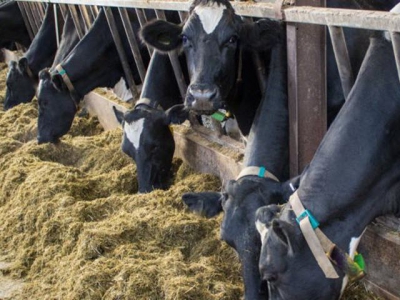Storage options for wet brewers grains explored

Storing wet brewers grains with salt prevents spoilage and improves nutrient digestibility.
University of New Hampshire researchers recently studied the effects of different storage methods for wet brewers grains (WBGs) on spoilage and digestibility.
Brewers grains are sourced from the brewing industry, which uses malted barley to produce beer, leaving behind a protein-rich residue that is often fed to livestock. Storage of brewers grains can be an issue due to its high moisture content.
Doctoral student Eric Hatungimana and dairy extension specialist Peter Erickson with the University of New Hampshire department of agriculture, nutrition and food systems reported on two experiments focused on improving the shelf-life of WBGs either treated with salt or a commercial preservative on: (1) yeast and mold growth and in vitro dry matter digestibility (IVDMD) and (2) in situ dry matter and protein digestibility.
In the first experiment, Hatungimana and Erickson randomly allocated WBG samples to one of three treatments: control (0%), preservative (0.05%, 0.10% or 0.15%) or salt (1.4%, 2.6% or 3.8%). They used 14 plastic tubs (two for each treatment) containing of 48.5 kg of fresh WBGs.
The tubs were left inside a room with temperature varying from 12.8°C to 14.4°C for 28 days, the researchers said, and subsamples were collected every two days and analyzed for yeast and mold concentrations. Subsamples collected on days 0, 7, 14, 21 and 28 were analyzed for IVDMD in a batch culture fermenter, they added.
In the second experiment, three cannulated cows were used twice in a replicated 3 x 3 Latin square to determine the dry matter, neutral detergent fiber, acid detergent fiber and protein digestibility of WBGs preserved for one week with 0% or 0.10% preservative or 2.6% salt, Hatungimana and Erickson said.
According to the researchers, in the first experiment, WBGs treated with the commercial preservative had the smallest yeast counts, and WBGs treated with salt (3.8%) and preservative (0.15%) had the smallest mold counts.
Hatungimana and Erickson reported that they observed greater IVDMD in WBGs treated with salt.
For the second experiment, they reported that treatment with 2.6% salt resulted in greater in situ dry matter and protein digestibility.
Hatungimana and Erickson concluded that salt and a commercial preservative prevented WBG spoilage, as indicated by yeast and mold counts, but salt had an advantage of improving dry matter and protein digestibility.
The results were published in the October issue of Applied Animal Science.
Có thể bạn quan tâm
 The Ministry of Industry and Trade proposes solutions for difficulties in exporting agricul
The Ministry of Industry and Trade proposes solutions for difficulties in exporting agricul Conference on development of export of agricultural and aquatic products to the Chinese market
 Trà Vinh farmers breed more goats that meet bio-safety standards
Trà Vinh farmers breed more goats that meet bio-safety standards The Cửu Long (Mekong) Delta province of Trà Vinh has encouraged farmers to breed more goats that meet biosafety standards and use bio-products to treat goat
 Nearly 2,000 poor farmers capitalized in first nine months
Nearly 2,000 poor farmers capitalized in first nine months Give poor farmers seedlings, seeds, and production tools worth over VND3.5 billion (US$151,443) in the first nine months of the year.